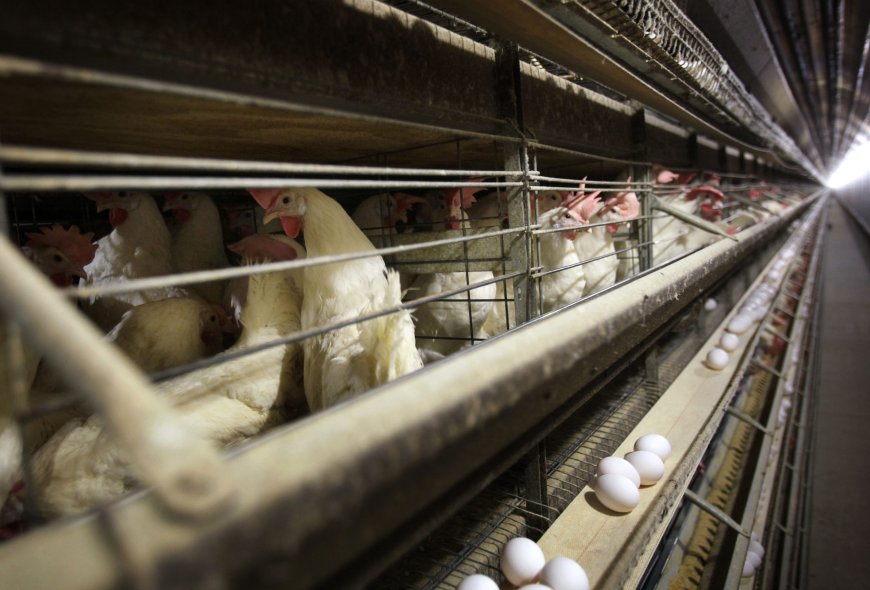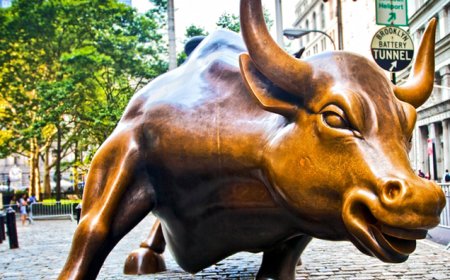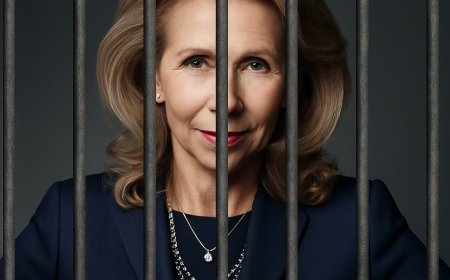Unscrambling the Price of Eggs


The fate of the nation, as we have all learned, hangs on the price of eggs. But have you noticed that the price of eggs—which might finally be coming down—has risen much faster for some eggs than others? In the past, if you went down to your farmers’ market and bought eggs laid by local free-range hens living under humane conditions, you had to pay a big premium. But now, if you go to Walmart or Kroger and buy conventional eggs produced by caged hens on supposedly super-efficient industrial-scale farms, you are likely to pay just as much or even more.
How can this be? Part of the answer lies with the bird flu outbreak, which has affected different kinds of poultry operations differently. But another factor appears to be just as important: corporate collusion and resulting greedflation.
There is no doubt that bird flu has played a significant role in driving up the cost of all eggs. Wild birds brought a particularly contagious strain of bird flu to the U.S. in 2022, and egg farmers have struggled ever since to protect their flocks. When farmers find a single case of bird flu, current federal policy requires that they kill their entire flock. Since 2022, farmers have killed more than 120 million egg-laying hens. That loss of supply naturally drives up prices.
But there is a lot more going on. To start, why has the price of conventional, industrial-scale, caged-bird eggs increased much more than the price of cage-free eggs? For example, the average retail price for caged-bird eggs rose 140 percent from December 2021 to December 2022, while average retail price for cage-free eggs rose just 41 percent during this time.
One factor is that cramming thousands, in some cases millions, of chickens into confined indoor spaces creates the perfect breeding ground for spreading and evolving zoonotic disease. So it should be no surprise that the biggest bird flu losses have been concentrated among a few massive farms with more than a million birds each.
By comparison, most cage-free or pasture-based egg farms house fewer birds per farm. When an outbreak occurs, fewer hens must be preventively destroyed. Less concentrated production means less concentrated risk.
But that’s not the whole story. The greater hen losses in caged-egg production still cannot account for how much caged-egg prices have risen. In the past, when egg supply contracted, prices went up at a comparatively modest rate. According to the agriculture economist Jayson Lusk, a rule of thumb in the egg business is that a 1 percent decrease in supply will typically result in a 6.6 percent increase in prices. This held true for the last bird flu outbreak in 2015: Prices rose roughly 7 percent for every 1 percent decrease in supply. But prices rose much more this time around. An analysis by Hunterbrook Media found that between 2022 and 2024, for every 1 percent decrease in egg production, prices increased by anywhere from 17 percent to 33 percent.
Here’s where apparent corporate collusion enters the story. To understand how it works, you need to know that the wholesale price of the typical egg produced by a caged hen is, by and large, not determined by markets. There is a wholesale spot market for eggs in which market prices are discovered each day through competition between buyers and sellers, just as economic textbooks prescribe. But, according to one survey of egg producers, only 11 percent of conventional eggs are sold in this market.
Most conventional eggs are sold through long-term contracts between large egg producers (companies that either own egg farms directly or contract with farmers to collect, clean, and package eggs) and large egg purchasers like supermarket chains and food processors. How do these corporate entities know what price to use in their contracts? They can’t use market prices, because most eggs don’t trade on markets. Instead they rely on an obscure entity called Urner Barry. The company’s roots go back to the 19th century, but it’s now a unit of Expana, which describes itself as “the world’s leading agrifood-focused Price Reporting Agency and global information provider.”
Urner Barry compiles a so-called price index for different kinds of eggs. It determines these prices, it says, by taking note of the tiny spot market and by collecting price data directly from individual processors, distributors, exporters, and buyers. It aggregates all this data and then turns around and sells it, primarily to the same entities who sent the information in originally, who then use it in the pricing formulas that set the ever-changing price of eggs in their contracts.
If this sounds to you like a process that might be easily manipulated, your instincts are right. If large egg sellers wanted to use bird flu as a cover for pushing prices up beyond competitive levels, all they would need to do is feed inflated price data to Urner Barry. When the Urner Barry egg price index rose as a result, so would all the egg prices in the contracts they signed with egg buyers. It would only take coordinated action from a few dominant industry players to create a reinforcing upward price spiral.
Urner Barry says it scrutinizes the information it gets from egg companies and uses methods established by the International Organization of Securities Commissions to avoid price manipulation. However, state attorneys general, members of Congress, and investigators at Hunterbrook, Farm Action, and Food & Water Watch have all questioned the integrity of Urner Barry’s self-referential game of telephone.
And for good reason. Price fixing based on this kind of information sharing has happened before. In the mid-2010s, chicken companies settled major price fixing allegations that they fed false information to an influential regional price index, the Georgia Dock, in a scheme to raise prices. Some of these chicken price fixing cases specifically named Urner Barry as a vector for collusive information sharing. One suit alleged that chicken executives pressured an Urner Barry executive to raise reported prices.
The stark price differences between conventional and cage-free eggs adds to the suspicious pattern. Trade in cage-free and other specialty eggs involves more players, and prices are usually pegged to the cost of production rather than to the Urner Barry egg index. So manipulating the price of cage-free eggs seems more difficult, which is perhaps part of the explanation for why their price has not gone up as much as the price of caged-bird eggs.
Another cause for suspicion is the fact that the profit margins for the largest egg provider in the U.S., Cal-Maine, which mostly sells conventional eggs at contract prices pegged to the Urner Barry index, have swollen by as much as four times. By contrast, the profit margins of entities like Vital Farms, which sells eggs from free-range chickens and sets prices based on the actual cost of production, have remained steady. We could soon get more answers to such anomalies as the Department of Justice pursues a recently opened antitrust investigation into the egg industry.
Whether intentional conspiracy or uncoordinated collective greed, pricing mechanisms for caged-bird eggs are clearly broken and hurting consumers, especially low-income families. Egg companies, global food commodity traders, and large food manufacturers have reaped record profits following disruptions like bird flu and the COVID-19 pandemic. With more environmental and political disruptions on the horizon, we need a fairer food economy that rewards resilience over fragility. We need policies that support more diversified food systems and crack down on corporate collusion and price gouging.
The post Unscrambling the Price of Eggs appeared first on Washington Monthly.










































